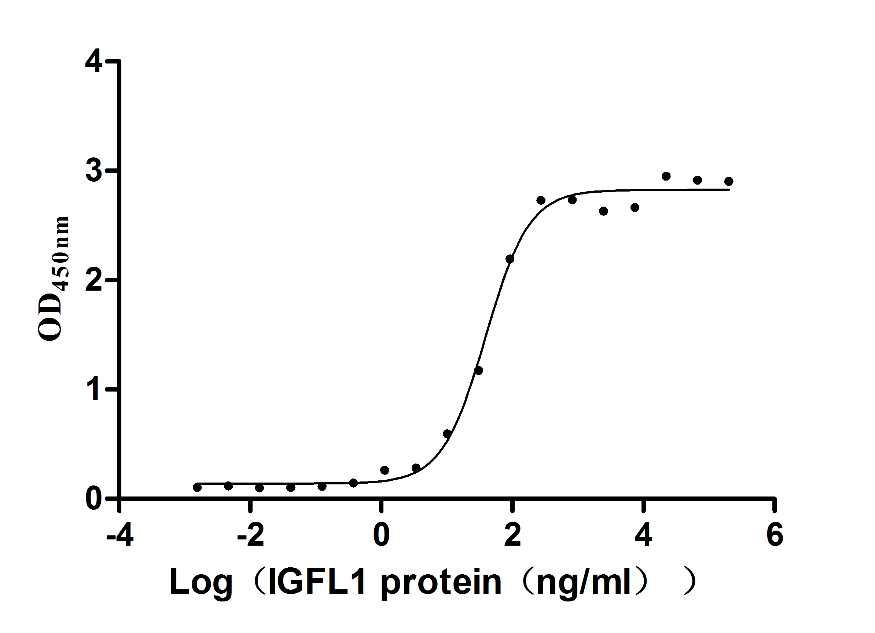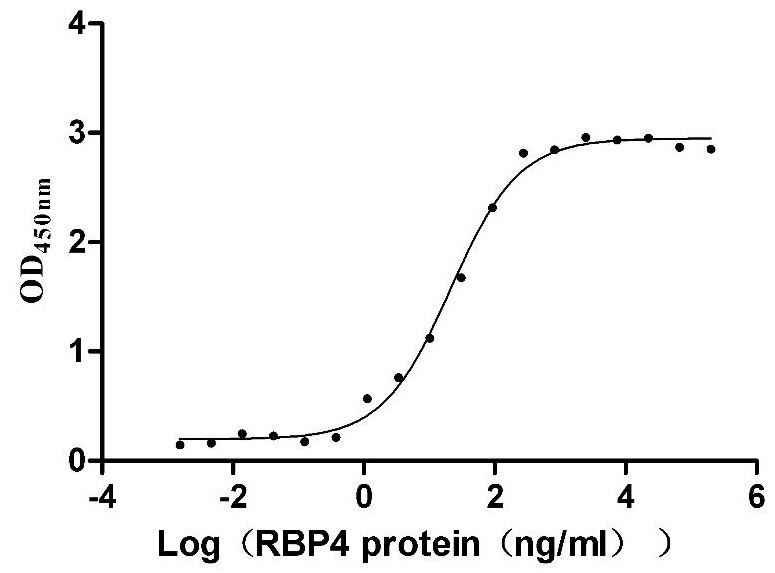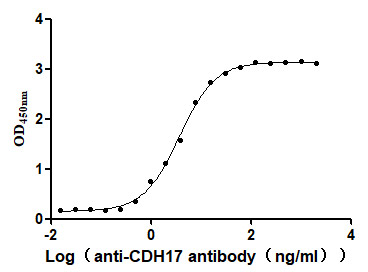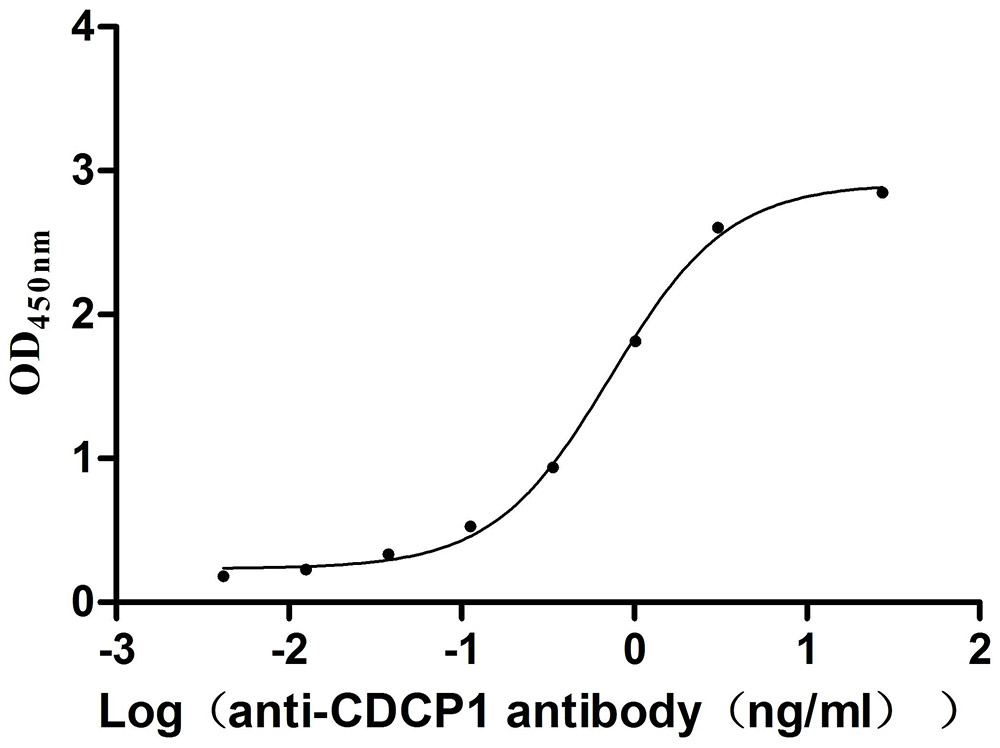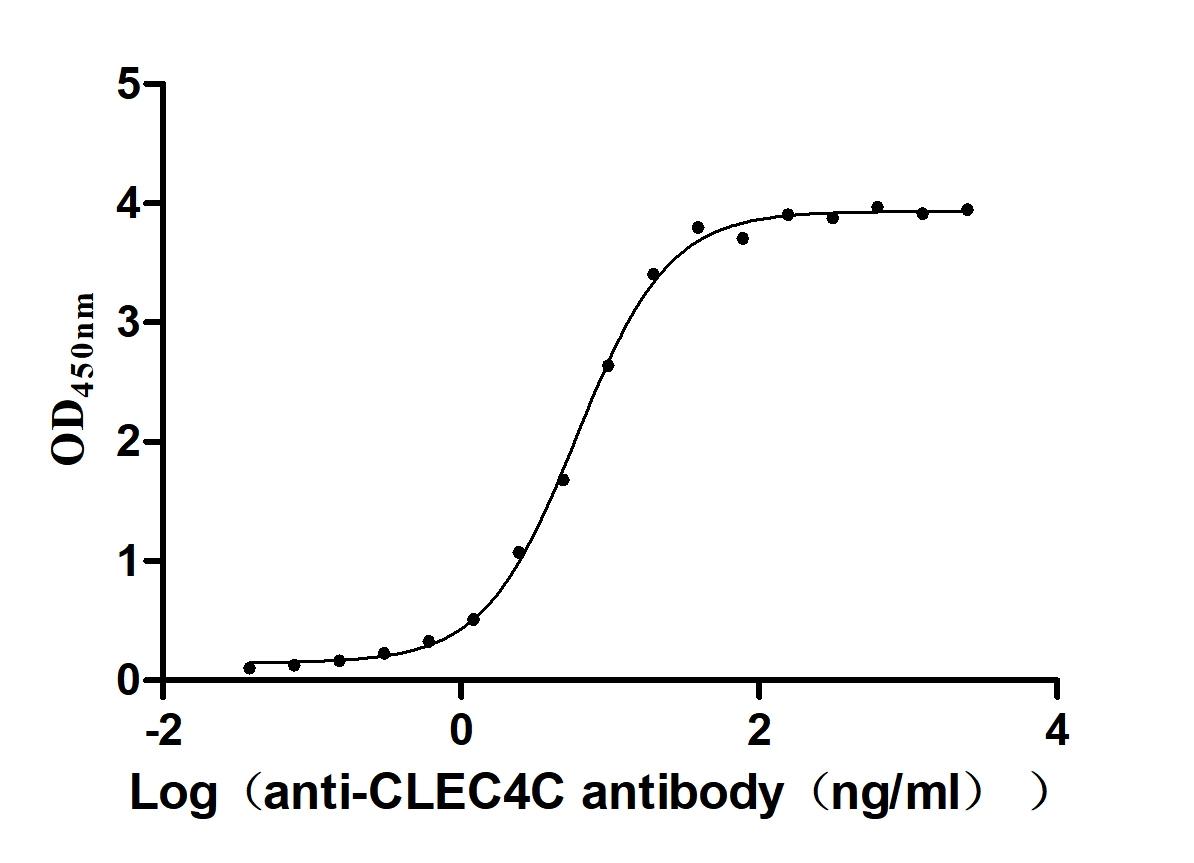Recombinant Human Presenilins-associated rhomboid-like protein, mitochondrial (PARL)
In Stock-
中文名称:人PARL重组蛋白
-
货号:CSB-CF880960HU
-
规格:¥9720
-
图片:
-
其他:
产品详情
-
纯度:Greater than 85% as determined by SDS-PAGE.
-
基因名:PARL
-
Uniprot No.:
-
别名:(Mitochondrial intramembrane cleaving protease PARL)
-
种属:Homo sapiens (Human)
-
蛋白长度:Full Length of Mature Protein
-
来源:in vitro E.coli expression system
-
分子量:37.8 kDa
-
表达区域:53-379aa
-
氨基酸序列FRKAPRKVEPRRSDPGTSGEAYKRSALIPPVEETVFYPSPYPIRSLIKPLFFTVGFTGCAFGSAAIWQYESLKSRVQSYFDGIKADWLDSIRPQKEGDFRKEINKWWNNLSDGQRTVTGIIAANVLVFCLWRVPSLQRTMIRYFTSNPASKVLCSPMLLSTFSHFSLFHMAANMYVLWSFSSSIVNILGQEQFMAVYLSAGVISNFVSYVGKVATGRYGPSLGASGAIMTVLAAVCTKIPEGRLAIIFLPMFTFTAGNALKAIIAMDTAGMILGWKFFDHAAHLGGALFGIWYVTYGHELIWKNREPLVKIWHEIRTNGPKKGGGSK
Note: The complete sequence including tag sequence, target protein sequence and linker sequence could be provided upon request. -
蛋白标签:C-terminal Myc-tagged
-
产品提供形式:Liquid or Lyophilized powder
Note: We will preferentially ship the format that we have in stock, however, if you have any special requirement for the format, please remark your requirement when placing the order, we will prepare according to your demand. -
缓冲液:If the delivery form is liquid, the default storage buffer is Tris/PBS-based buffer, 5%-50% glycerol. If the delivery form is lyophilized powder, the buffer before lyophilization is Tris/PBS-based buffer, 6% Trehalose.
-
复溶:We recommend that this vial be briefly centrifuged prior to opening to bring the contents to the bottom. Please reconstitute protein in deionized sterile water to a concentration of 0.1-1.0 mg/mL.We recommend to add 5-50% of glycerol (final concentration) and aliquot for long-term storage at -20℃/-80℃. Our default final concentration of glycerol is 50%. Customers could use it as reference.
-
储存条件:Store at -20°C/-80°C upon receipt, aliquoting is necessary for mutiple use. Avoid repeated freeze-thaw cycles.
-
保质期:The shelf life is related to many factors, storage state, buffer ingredients, storage temperature and the stability of the protein itself.
Generally, the shelf life of liquid form is 6 months at -20°C/-80°C. The shelf life of lyophilized form is 12 months at -20°C/-80°C. -
货期:3-7 business days
-
注意事项:Repeated freezing and thawing is not recommended. Store working aliquots at 4°C for up to one week.
-
Datasheet & COA:Please contact us to get it.
相关产品
靶点详情
-
功能:Required for the control of apoptosis during postnatal growth. Essential for proteolytic processing of an antiapoptotic form of OPA1 which prevents the release of mitochondrial cytochrome c in response to intrinsic apoptotic signals. Required for the maturation of PINK1 into its 52kDa mature form after its cleavage by mitochondrial-processing peptidase (MPP). Promotes changes in mitochondria morphology regulated by phosphorylation of P-beta domain.
-
基因功能参考文献:
- PARL preserves mitochondrial membrane homeostasis via STARD7 processing and is emerging as a critical regulator of protein localization between mitochondria and the cytosol PMID: 29301859
- Study confirmed that common variants in PARL and PINK1 were associated with leprosy. Furthermore, PARL and PINK1 could physically interact with each other and were involved in the highly connected network formed by reported leprosy susceptibility genes. PMID: 27876828
- PDK2/PARL senses defects in mitochondrial bioenergetics. PMID: 28178523
- Adipogenic process can be dissected into 3 stages according to the participation of PARL-PINK1-Parkin system. Findings reveal the sequential adipogenic events directed by PARL-PINK1-Parkin system, add more evidence supporting the convergence of pathogenesis leading to neurodegenerative and metabolic disease PMID: 28641777
- These findings enrich the allelic spectrum of ABCC5 in PACG. We identified no tagging SNP responsible for the association of the whole region. PMID: 28813580
- These results reveal a pro-apoptotic function of PARL and identify PARL-mediated Smac processing and cytochrome c release facilitated by OPA1-dependent cristae remodelling as two independent pro-apoptotic pathways in mitochondria. PMID: 28288130
- Its mutations are a rare cause of PD and genetic variants are neither strong nor common risk factors in Parkinson disease. PMID: 26778534
- pathogenic PINK1 mutants which are not cleaved by PARL affect PINK1 kinase activity and the ability to induce PARK2-mediated mitophagy. PMID: 26101826
- Common genetic variants of the PINK1 and PARL genes are unlikely to be involved in schizophrenia. PMID: 25354644
- the frequency of the haplotype AAC, and AAT were significantly higher in the unaffected cases and the frequencies of haplotype GGT were significantly higher in LHON cases PMID: 23973714
- Rhomboid protease PARL mediates the mitochondrial membrane potential loss-induced cleavage of PGAM5. PMID: 22915595
- p.S77N variant, and, possibly, mutations in the PARL protein overall, are not a frequent cause of autosomal recessive early-onset Parkinson's disease PMID: 21953724
- work provides unexpected insights into the structural determinants regulating Parl stability and activity in vivo, and reveals a complex cascade of proteolytic events controlling the function of the protease in the mitochondrion PMID: 21415861
- PARL deficiency impairs PARKIN recruitment to mitochondria. PMID: 21355049
- the PARL-catalyzed removal of the Pink1 signal sequence in the canonical import pathway acts as a cellular checkpoint for mitochondrial integrity PMID: 21426348
- Mitochondrial protease PARL cleaves PINK1 at position A103. PMID: 21138942
- Data show that no association between PARL gene SNPs and LHON in Chinese patients with m.11778G>A. PMID: 20711738
- variants of PARL are suggested to influence cell death by apoptosis which has long been believed to intrigue the neurodegeneration of LHON. PMID: 20407791
- Results suggest that genetic variation within PARL influences mitochondrial abundance and integrity. PMID: 19862556
- results indicate a different function and mechanism of Hax1 in apoptosis and re-opens the question of whether mammalian PARL, in addition to apoptosis, regulates mitochondrial stress response through Omi/HtrA2 processing. PMID: 19680265
- PARL might mediate a developmentally regulated mitochondria-to-nuclei signaling through regulated proteolysis of its N terminus and release of the Pbeta peptide PMID: 14732705
- Variation in PSARL sequence and/or expression may be an important new risk factor for type 2 diabetes and other components of the metabolic syndrome. PMID: 15729572
- The Leu262Val variant is unlikely to be an important contributor to insulin resistance. PMID: 17019603
- the PARL rs3732581 genetic variant may have a role in insulin levels, metabolic syndrome and coronary artery disease PMID: 18758826
- Genetic variation of PARL may indicate earlier onset of type 2 diabetes and increased susceptibility to nephropathy and cardiovascular complications. PMID: 19185381
显示更多
收起更多
-
亚细胞定位:Mitochondrion inner membrane; Multi-pass membrane protein.; [P-beta]: Nucleus.
-
蛋白家族:Peptidase S54 family
-
数据库链接:
Most popular with customers
-
Recombinant Human Tumor necrosis factor receptor superfamily member 5 (CD40), partial (Active)
Express system: Mammalian cell
Species: Homo sapiens (Human)
-
Recombinant Human Semaphorin-4D (SEMA4D), partial (Active)
Express system: Mammalian cell
Species: Homo sapiens (Human)
-
Recombinant Human HLA class II histocompatibility antigen gamma chain (CD74), partial (Active)
Express system: Mammalian cell
Species: Homo sapiens (Human)
-
Recombinant Human IGF-like family receptor 1 (IGFLR1), partial (Active)
Express system: Mammalian cell
Species: Homo sapiens (Human)
-
Recombinant Mouse Transthyretin (Ttr) (Active)
Express system: Mammalian cell
Species: Mus musculus (Mouse)
-
Recombinant Human Cadherin-17 (CDH17), partial (Active)
Express system: Mammalian cell
Species: Homo sapiens (Human)
-
Recombinant Mouse CUB domain-containing protein 1 (Cdcp1), partial (Active)
Express system: Mammalian cell
Species: Mus musculus (Mouse)
-
Recombinant Macaca fascicularis C-type lectin domain family 4 member C(CLEC4C), partial (Active)
Express system: Mammalian cell
Species: Macaca fascicularis (Crab-eating macaque) (Cynomolgus monkey)

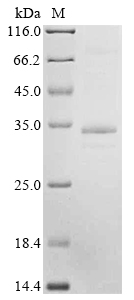

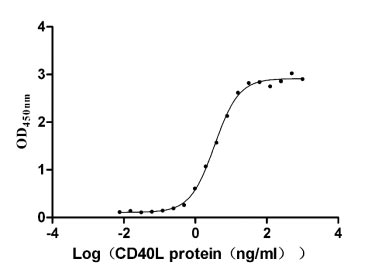

-AC1.jpg)
